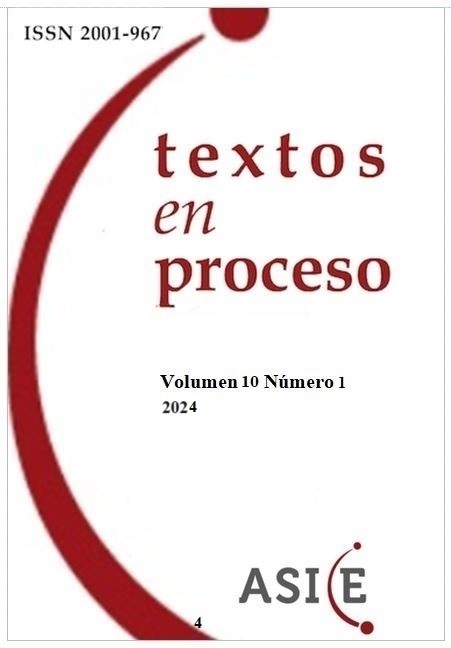The linguistic expression of aesthetic emotions: A proposal for its study
Abstract
In this study, I explore the emotional expressions used by speakers of various Spanish dialects when describing their experiences at artistic sites. With this aim, I will analyse a corpus of reviews posted on a popular social network for travellers, focusing specifically on the Giza Pyramids in Egypt. The study identifies and examines both literal and figurative expressions used to convey different aesthetic emotions. Many of these expressions are linked to specific somatic reactions experienced by individuals. By leveraging the systematic connections between these somatic responses and corresponding aesthetic emotions, the research establishes conceptual links between the linguistic expressions and a well-defined group of aesthetic emotions as described in recent literature. The main results demonstrate these conceptual connections and provide insights into the linguistic representation of aesthetic emotions. The study concludes by highlighting potential future research directions on the linguistic expression of aesthetic emotions and the interplay between language, culture, and aesthetic experiences.
Downloads
References
Colantonio, C. (2022). Las reseñas de TripAdvisor: ¿un nuevo género de discurso turístico?. Texts in Process, 8(1), 42-59. Doi: https://doi.org/10.17710/tep.2022.8.1.3colantonio
Díaz-Vera, J. E. (2021). Conceptual variation in the linguistic expression of aesthetic emotions: Cross-cultural perspectives on an underexplored domain. Studies in Psychology 42(2), pp. 399–427.
Díaz-Vera, J. E. (2024). Aesthetic emotional reactions and their verbal expression in a corpus of Japanese travellers’ online reviews. Language and Cognition 16(3), pp. 762–784.
Eco, U. (2004). On beauty: A history of a Western idea. London: Secker and Warburg.
Egdom, G.-W., Pluymaekers, M., y Dooge, Z. (2018). Applying machine translation in sentiment analysis: The case of Chinese reviews on TripAdvisor. Servsig Conference Proceedings 2018: Opportunities for Services in a Challenging World, pp. 337–340. Recuperado de: https://www.ieseg.fr/wp-content/uploads/2018/02/SERVSIG-2018-Proceedings.pdf
Fina, M. E. (2011). What a TripAdvisor corpus can tell us about culture. CULTUS Journal of Intercultural Mediation and Communication, 4, pp. 59–80.
Fingerhut, J. y Prinz, J. J. (2020). Aesthetic emotions reconsidered. The Monist, 103, pp. 223–229.
Franzen. A. J. (2012). Anglo-Saxon Keywords. Malden / Oxford: Wiley-Blackwell.
Geeraerts, D. (2010). Perspectives for the past: Perspectives for Cognitive Diachronic Semantics. En Winters, M., Tissari H. y Allan, K. (Eds.), Historical Cognitive Linguistics (pp. 333–356). Berlin / New York: De Gruyter Mouton.
Geeraerts, D. y Gevaert, C. (2008). Hearts and (angry) minds in Old English. En Sharifian, F., Dirven, R., Yu, N. y Niemeier, S. (Eds.), Culture, body, and language: Conceptualizations of internal body organs across cultures and languages (pp. 319–347). Berlin / New York: De Gruyter Mouton.
Gibbs, R. W. (2006). Cognitive linguistics and metaphor research: past successes, skeptical questions, future challenges. DELTA, 22, pp. 1–20.
Ibarretxe-Antuñano, I. (2013). The power of the senses and the role of culture in metaphor and language. En Caballero, R. y Díaz-Vera, J. E. (Eds.), Sensuous cognition: Explorations into human sentience: Imagination, (e)motion and perception (pp. 109–133). Mouton.
Hernández Toribio, M. I., y Mariottini, L. (2023). Speech Act Set in TripAdvisor Conflictive Exchanges: A Contrastive Pragmatic Analysis between Spanish and Italian. Contrastive Pragmatics (published online ahead of print 2023). https://doi.org/10.1163/26660393-00001059
James, W. (1884). What Is an Emotion? Mind, 9(34), pp. 188–205.
Kövecses, Z. (2000). Metaphor and emotion. Cambridge: Cambridge University Press.
Kövecses, Z. (2002). Metaphor: A practical introduction. Oxford: Oxford University Press.
Kövecses, Z. (2005). Metaphor in culture: Universality and variation. Cambridge: Cambridge University Press.
Kövecses, Z. (20102). Metaphor: A Practical Introduction. Oxford: Oxford University Press.
Kövecses, Z. (2014). Conceptualizing emotions: A revised cognitive linguistic perspective. Poznań Studies in Contemporary Linguistics, 50(1), pp. 5–28.
Lakoff, G. y Johnson, M. (1980). Metaphors we live by. Chicago: University of Chicago Press.
Lakoff, G. y Kövecses, Z. (1987). The cognitive model of anger inherent in American English. En Holland, D. y Quinn, N. (Eds.), Cultural models in language and thought (pp. 195–221). Cambridge: Cambridge University Press.
Manca, E. (2018). Verbal techniques of the language of tourism across cultures: An analysis of five official tourist websites. En Bielenia-Grajewska, M. y Cortes de los Ríos, E. (Eds.), Innovative Perspectives on Tourism Discourse (pp. 91–110). Hershey, PA: IGI Global.
Minaya, F. J. (2019). As beautiful inside, as it is outside: On the connection between beauty and morality in the Old English corpus. Complutense Journal of English Studies, 27, pp. 205–221.
Real Academia Española: Banco de datos (CORPES XXI) [en línea]. Corpus del Español del Siglo XXI. http://www.rae.es . Última consulta: 14/05/2022.
Reber, R. (2012). Processing fluency, aesthetic pleasure, and culturally shared taste. En Shimamura, A. P. y Palmer, S. E. (Eds.), Aesthetic science: Connecting mind, brain, and experience (pp. 223–249). Oxford: Oxford University Press.
Roediger, H. (1980). Memory metaphors in Cognitive Psychology. Memory & Cognition, 8, pp. 231–246.
Ross, D. (2018). Small corpora and low-frequency phenomena: Try and beyond contemporary, standard English. Corpus, 18, pp. 1–40.
Scherer, K. R. (2005). What are emotions? And how can they be measured? Social Science Information, 44, 695–729.
Copyright (c) 2024 Javier E. Díaz-Vera

This work is licensed under a Creative Commons Attribution 4.0 International License.
Texts in Process (TEP) is a non-commercial open-access scholarly journal governed by a Creative Commons Recognition 4.0 International license. It follows a full and unrestricted open access, without charges or fees for shipping, reviewing, processing and publishing articles. Users can read, download without registering, distribute, print or link the complete texts of numbers and articles, without the permission of the editors or authors. There is also no charge to publish (APCs), being applicable to the entire editorial process. The authors retain their intellectual rights at all times.
ASICE-EDICE Programme has always believed that non-commercial, open, unlimited and unrestricted access to specialized academic publications is a vehicle for academic freedom and scientific rigor. It adheres and shares the Declaration of Mexico and DORA to guarantee the protection of academic and scientific production in Open Access.

















